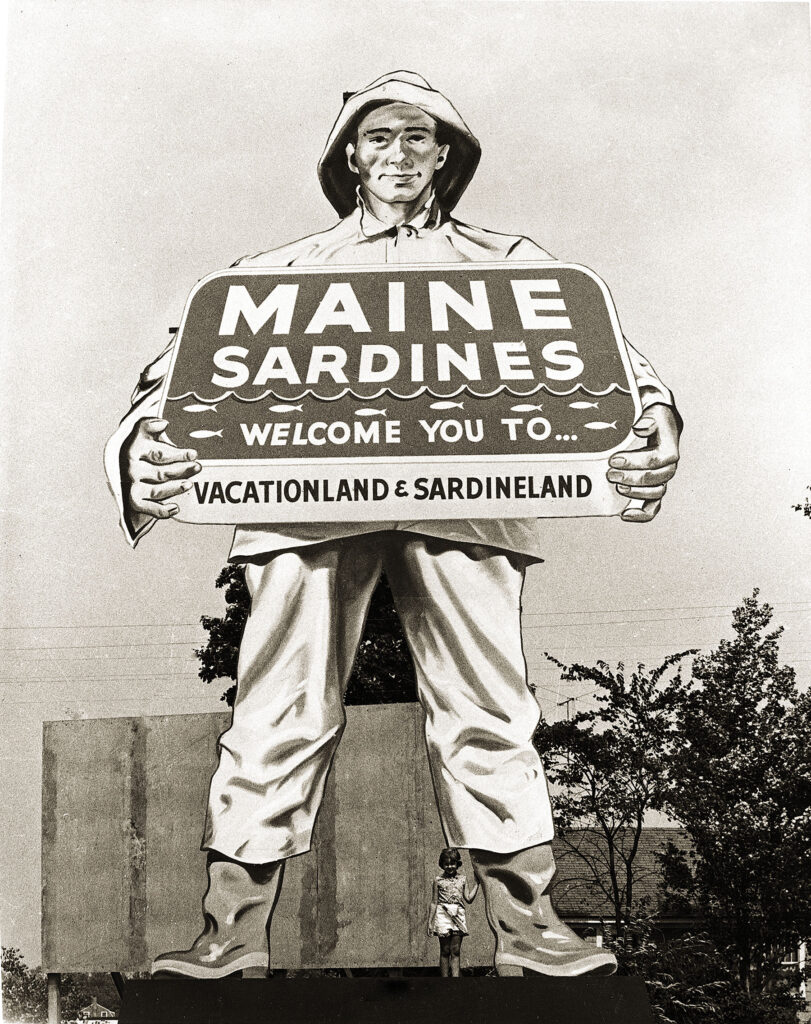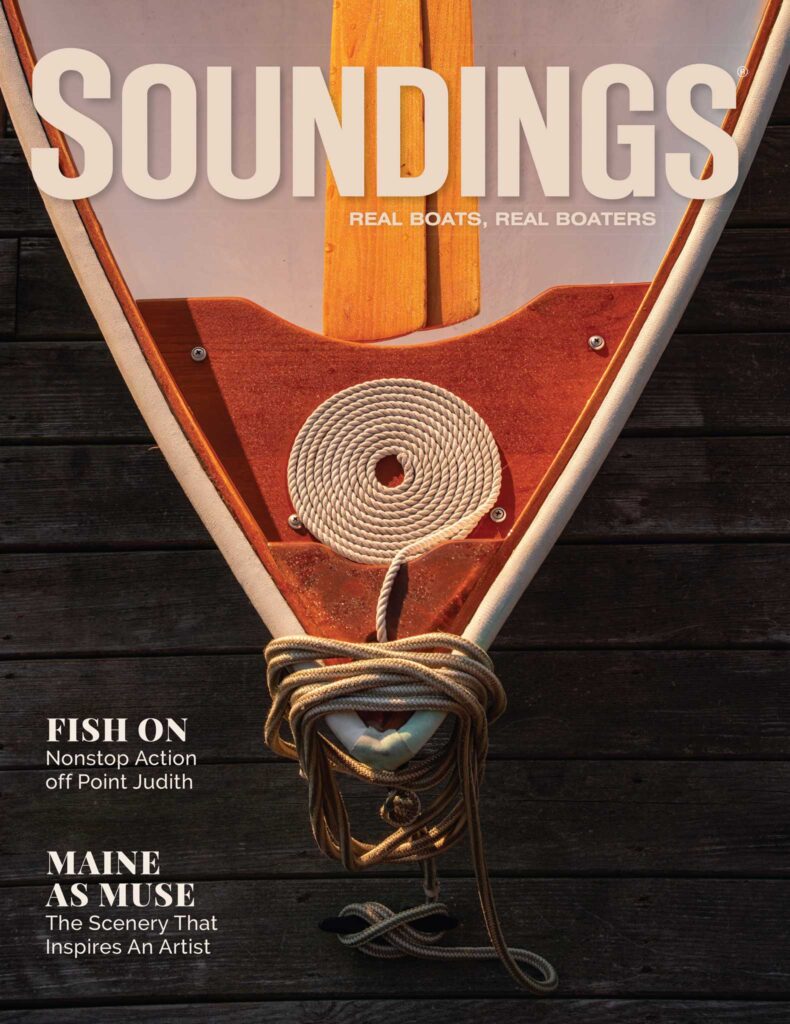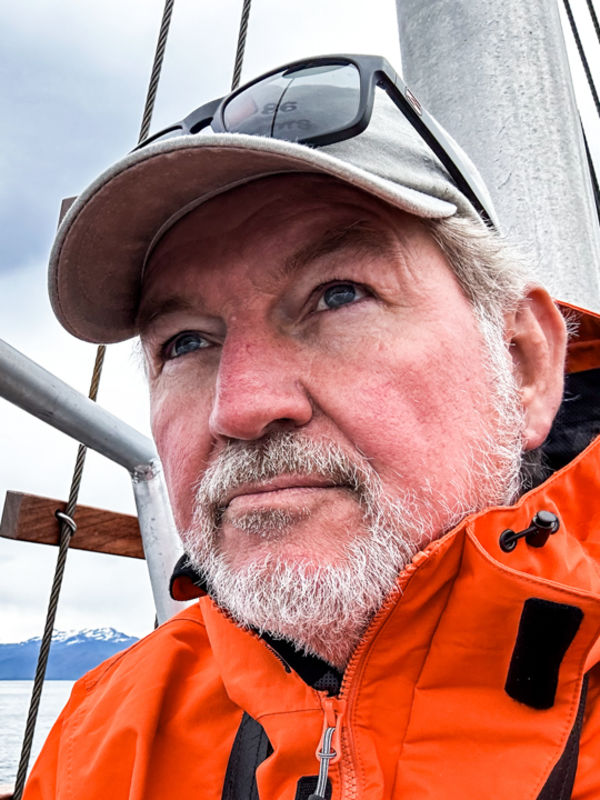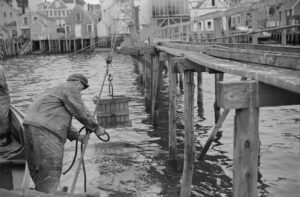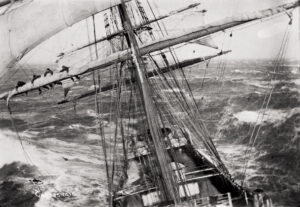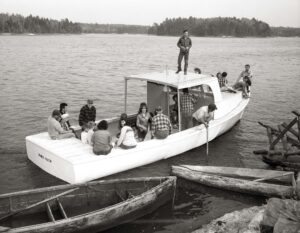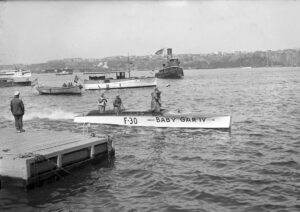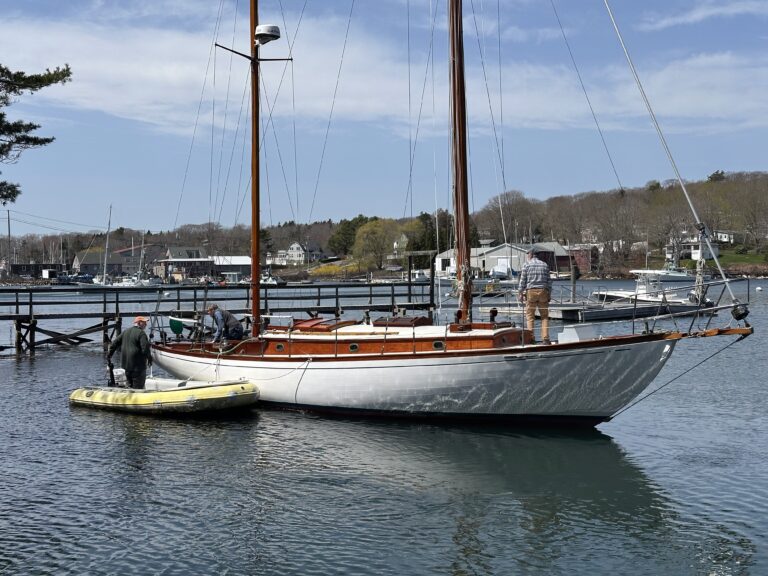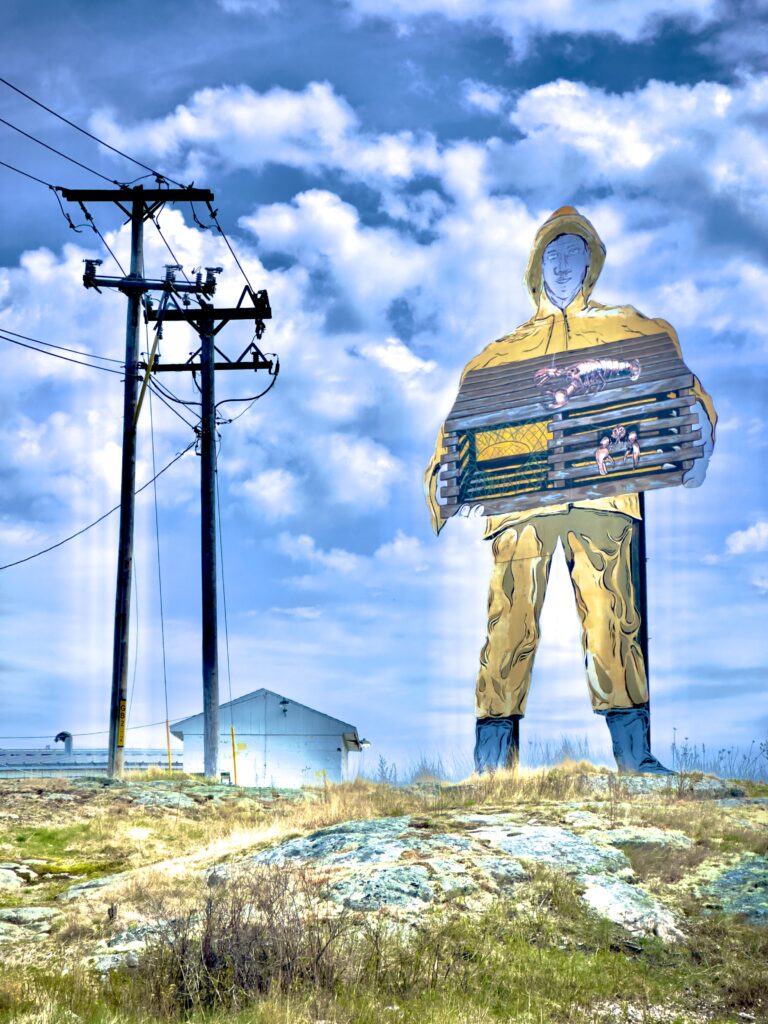
For about three decades, from the 1950s until the 1980s, a 40-foot tall billboard of a fisherman holding a giant can of sardines greeted visitors at the southern end of the Maine Turnpike as they entered the state. Known as Big Jim, it would be lit up at night and could be seen from a half-mile away.
As Americans switched from canned sardines to canned tuna, the sign was moved to the 100,000-square-foot Stinson sardine processing plant in Prospect Harbor, Maine, a Downeast location far removed from most tourists’ eyes. When Bumble Bee closed that sardine plant in 2010, the last one in the country, a lobster processor took over and painted a lobster trap over the sardine can.
A few years later, the lobster processor moved its operations to Massachusetts but the cavernous plant buildings and Big Jim remained. In 2022, American Aquafarms proposed locating an industrial-scale salmon farm in Frenchman Bay. They planned to hatch eggs and process and transport salmon out of the former Stinson plant site. But Maine’s Department of Marine Resources terminated American Aquafarms’ permit application, citing issues with the source of the eggs and the eggs’ genetic makeup.
All this time, Big Jim remained.
The 90-acre facility was purchased again in 2024 by three local investors who intent to redevelop the site, which according to stipulations from the town’s select board will still have to include a working waterfront.
As of May 2025, Big Jim, now in his seventies, is still standing outside the plant in Prospect Harbor. Whether he will remain there is yet to be seen, and whether he will continue to hold a lobster trap or if he will be holding something else in the future is also unknown.
